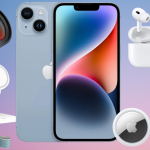In the technological jungle of smartphone displays, two titans reign supreme: OLED and LCD. Both boasting impressive technology and sleek designs, these powerhouse displays have become the cornerstone of our daily digital lives. But when it comes to choosing the best display for your next device, which one deserves the crown? Let’s dive into the world of smartphone displays as we compare and contrast OLED and LCD, shedding light on their strengths and weaknesses to help you make the best informed decision for your viewing pleasure.

OLED vs LCD: Understanding the Key Differences
When it comes to choosing a smartphone, one of the key factors to consider is the type of display it comes with. OLED and LCD are two of the most common types of display technologies found in smartphones today, each offering its own set of advantages and disadvantages.
One of the main differences between OLED and LCD displays is the way they produce light. OLED displays use organic light-emitting diodes to produce light and colors directly, resulting in vibrant colors, deep blacks, and high contrast ratios. On the other hand, LCD displays rely on a backlight to illuminate the screen, which can sometimes lead to less accurate colors and lower contrast ratios. Additionally, OLED displays are known for their flexibility and thinner form factor, making them a popular choice for devices with curved screens or bezel-less designs.
Display Quality: Examining Color Accuracy and Contrast
When comparing smartphone displays, one of the most critical factors to consider is color accuracy and contrast. OLED displays are known for their vibrant colors and deep blacks, providing a visually stunning experience for users. On the other hand, LCD displays may not offer the same level of color accuracy and contrast as OLED, but they are often more affordable and energy-efficient.
One way to evaluate color accuracy and contrast is by looking at the display’s ability to reproduce colors accurately and differentiate between shades. OLED displays tend to have better color accuracy and higher contrast ratios compared to LCD displays. This results in more vivid and lifelike images on OLED screens, making them ideal for watching videos, viewing photos, and playing games that require vibrant visuals. However, some users may prefer the more natural colors of LCD displays, which can be easier on the eyes for extended use.
Power Efficiency: Analyzing Battery Consumption
When it comes to comparing smartphone displays, one of the key factors to consider is the type of display technology used – OLED vs LCD. OLED displays are known for their vibrant colors, deep blacks, and energy efficiency. This is because each pixel on an OLED display emits its own light, allowing for more precise control over brightness levels. On the other hand, LCD displays rely on a backlight that illuminates the entire screen, resulting in less energy efficiency compared to OLED displays.
Another important aspect to consider when analyzing battery consumption is the impact of screen resolution. Higher resolution displays tend to consume more power as they require more processing power to render images. When comparing OLED vs LCD displays, OLED technology generally consumes less power due to its ability to turn off individual pixels when displaying darker colors. This results in better power efficiency and longer battery life, making OLED displays a popular choice among smartphone manufacturers looking to optimize battery performance.
Recommendations for Choosing the Best Display Technology
When it comes to choosing the best display technology for your smartphone, there are a few key factors to consider. One of the main considerations is whether to go for an OLED or LCD display. OLED displays are known for their vibrant colors, deep blacks, and energy efficiency. On the other hand, LCD displays are typically more affordable and offer great brightness levels.
For those who prioritize image quality and color accuracy, OLED displays are often the preferred choice. They provide better contrast ratios and viewing angles compared to LCD displays. On the other hand, if you are looking for a budget-friendly option with solid performance, LCD displays might be the way to go.
In conclusion, both OLED and LCD displays have their own set of strengths and weaknesses. OLED offers vibrant colors and deep blacks, while LCD provides better visibility in direct sunlight and is more budget-friendly. Ultimately, the decision between OLED and LCD comes down to personal preference and priorities. Whichever display you choose, rest assured that both technologies are constantly evolving and improving to provide an even better viewing experience on your smartphone. Happy screen shopping!








